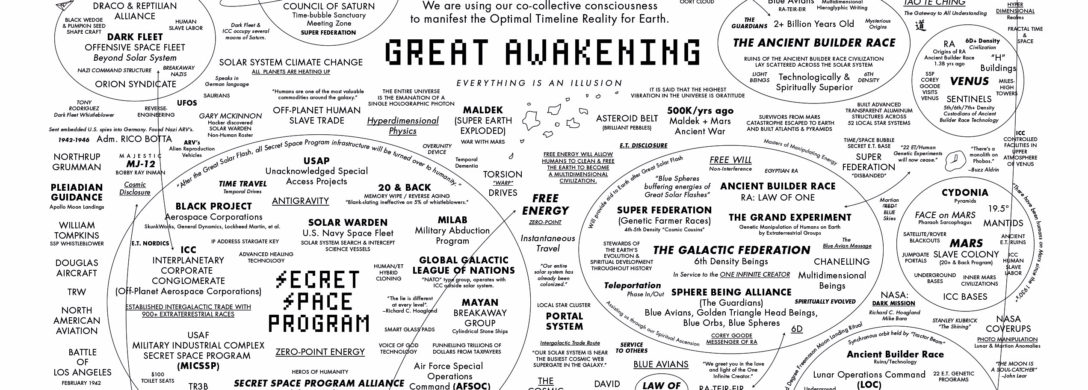Maybe this post is only of local interest, but I wanted share some insight into a disturbing rumor that went viral at Davidson College after credible evidence emerged about neo-Nazi activity among a few Davidson students.
The rumors were scary. The gist was that plans for a school shooting were discovered on a whiteboard in the college library. As Carol Quillen, Davidson’s president, noted in a faculty forum last week, the whiteboard incident was investigated at the time (which was several weeks ago) and thought to be related to a course project. Nevertheless, students and faculty alike have been understandably concerned about campus safety—especially in light of the reports of neo-Nazi students, including one who had apparently attended the white supremacist Charlottesville rallies last year.
It’s difficult to convey to folks not on campus just how frightened students, staff, and faculty have been. Many students, especially Jewish students, students of color, and LGBTQ students, feel entirely unsafe. Even when assured that the whiteboard school shooting rumor was just that, a rumor. (Of course, they aren’t safe. Nobody in the U.S. is safe, thanks to a minority of American’s rabid obsession with firearms and rejection of sensible gun regulations.)
Yesterday some of my students connected the dots and realized that it was indeed a group project that caused the rumors. And not just any group project. It was their own group project. It took a while to reach this conclusion, because the rumors had so distorted reality that the students themselves didn’t recognize their own work as the basis for the rumors.
Bear with me as I explain.
The students are in DIG 101: Introduction to Digital Studies. In DIG 101 we spend several weeks learning about the spread and impact of internet conspiracy theories, including how online conspiracy theories can lead to ideological radicalization. As you can imagine, each new day provides fodder for class discussion.
The whiteboard in question contained a flowchart for a group project about conspiracy theories, specifically the tragic Parkland school shooting, which some internet conspiracy theorists claim never happened. The flowchart connected a variety of conspiracy elements (biased media, false flags, crisis actors, etc.) that sprung up in the aftermath of the Parkland shooting. The flowchart contained no inflammatory statements or threats. It was diagnosing a problem.
After brainstorming on the whiteboard and doing other work, the group presented their project to DIG 101 in the form of a case study on October 26. In class students considered school shooting conspiracy theories from various perspectives. These perspectives included a parent who had lost a child in the shooting and social media executives whose platforms have helped the spread of conspiracy theories.
The students in this group designed the class study with incredible empathy toward with victims of school shootings and with enormous skepticism toward adherents of conspiracy theories. They are horrified that their own project about the dangers of internet conspiracies itself became the basis of a disturbing rumor. They never imagined their class project would contribute to a climate of fear on campus.
As I said, this project took place several weeks ago, well before the Tree of Life synagogue shooting in Pittsburgh. It simply was not on the students’ minds last week, which is why they didn’t realize at first it was their group project at the heart of these rumors. Quite literally, one of the students in the group—in a class discussion about the whiteboard and the possibility that it was trolling or part of a class project—said with all earnestness to the rest of the class, “who would be stupid enough to draw up plans for a school shooting as part of a class project?” It bears repeating: the rumors had so distorted the contents of the whiteboard that even students in the group did not recognize their work as the basis for the rumors.
It wasn’t until two days ago that one of my students made the connection, purely coincidentally. That student just happened to be in another class that just happened to have a faculty member sitting in for the day who just happened to have an accurate description of the whiteboard from the campus police report. The faculty member shared that description with the class. Once the student heard that the whiteboard contained two diagrams, with the words “a school shooting”, “4Chan,” “reporting it”, etc., and appeared to reference how information about school shootings traveled online, everything clicked in place for the student. The student then contacted the campus chief of police.
As my fellow faculty members and college administrators have readily acknowledged, my students did absolutely nothing wrong (except perhaps forgetting to wipe their whiteboard, a lesson that will forever be burned into their souls). This was a legitimate course project, tackling a real world problem. Their case study and ensuing class discussion were excellent. The way their project about conspiracy theories yielded its own toxic stream of misinformation ironically highlights the need for critical media literacy.
Davidson College still faces many difficulties in the days and weeks to come, but at least one terrible revelation from the past week we can now consider from a more contemplative perspective. I and my students are grateful for this community and its vision for a better world.
Header image: Great Awakening Conspiracy Map courtesy of Champ Pirinya
